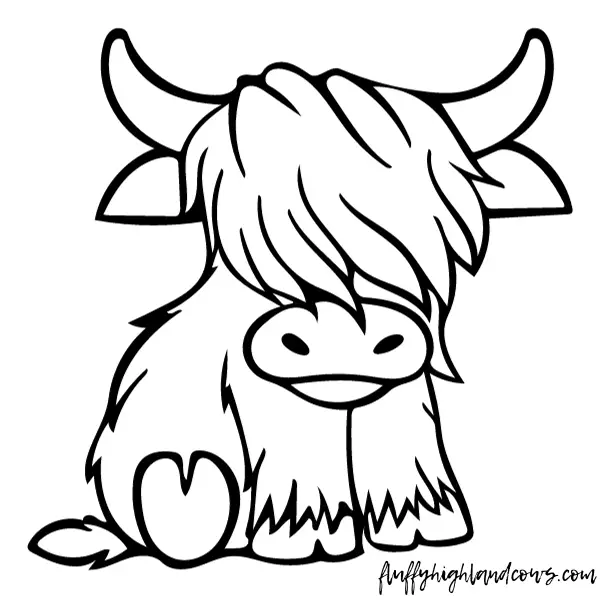Shetland Cattle vs. Highland Cattle: Unveiling the Distinct Charms of Two Scottish Breeds
In the picturesque landscapes of cattle farming, two breeds stand out for their hardiness, unique characteristics, and undeniable charm: Shetland Cattle and Highland Cattle.
While both share a lineage rooted in rugged terrains and a history shaped by centuries of adaptation, they each bring distinct qualities to the pastoral tapestry.
Shetland Cattle: A Compact Marvel
Shetland Cattle, one of the earliest domesticated breeds, traces its roots back to the Neolithic settlers on the Shetland Islands around 3,600 BC. Early remnants suggest these cattle were young aurochs, captured in Scottish forests, laying the foundation for a breed that would withstand the test of time.
Over the centuries, the Shetland cows faced challenges. From large aurochs, the breed gradually transformed into a smaller, resilient animal, standing just over a meter high at the shoulder.
These cattle weathered a period of hardship during the 19th century when land-owning lairds reduced farm sizes, causing poverty. Despite adversities, the Shetland Cattle supported local communities, especially during the challenging times of the Haaf fishery trade.
The 20th century brought both threats and a glimmer of hope. Agricultural improvement imported heavy breeds that threatened native breeds, but a brief revival in the early 1900s saw the establishment of the Shetland Cattle Herd Book Society (SCHBS). Post-World War II, however, subsidies for larger breeds and changing agricultural practices nearly pushed Shetland Cattle to extinction.
It was individuals like T. A. U. Fraser who saved the breed from the brink. In the 1980s, efforts intensified with the establishment of the New Foundation Herd Book and SCHBS, ensuring the survival of this resilient breed. The Falklands War saw Shetland Cattle sent abroad to boost numbers, highlighting their rarity.
Today, the SCHBS and Shetland Cattle Breeder’s Association tirelessly work to maintain genetic diversity and support breeders. Shetland Cattle, though small, play a vital role in niche markets, valued for their easy calving, fast growth, and unique health characteristics.
Origin and History
Hailing from the Shetland Isles, the Shetland Cattle are a compact breed with a rich history. These cattle have thrived in the challenging conditions of the Scottish archipelago, adapting to harsh climates and limited grazing resources.
Physical Characteristics
Shetland Cattle are notably smaller than their Highland counterparts. With a sturdy build, a distinct coat that varies in color, and short, curved horns, Shetlands embody efficiency in a petite package.
Shetland Cattle are typically black and white, with some variations in color. Smaller in size compared to many breeds, cows weigh between 350 kg and 450 kg, while bulls range from 550 kg to 600 kg.
Their upward-curving horns, though often trimmed, add to their distinctive appearance. A long, protective coat helps them endure harsh winters, shedding in the summer.
These traits, coupled with their adaptability, make Shetland Cattle desirable for specific markets.
Temperament and Use
Known for their calm and docile temperament, Shetland Cattle are easily managed. Traditionally utilized for both meat and dairy, their adaptability to small-scale farming has endeared them to those seeking a manageable and versatile breed.
Today, Shetland Cattle find purpose in specialty beef markets and are kept on small-scale farms with a focus on high sales income and low maintenance costs.
Approximately 800 registered breeding cows contribute to the breed’s conservation, with an average of 180 calves born each year. The SCHBS, alongside other organizations, plays a crucial role in preserving the breed’s unique traits and ensuring its continued existence.
In the face of adversity and changing agricultural landscapes, Shetland Cattle stand as resilient symbols of heritage, conservation, and the unwavering dedication of those who strive to protect these extraordinary creatures.
Comparative Analysis Between Shetland Cattle & Highland Cattle
Size and Build
Shetland Cattle, being smaller and more compact, are ideal for those with limited space or seeking a manageable herd size. In contrast, Highland Cattle’s larger stature might appeal to those with expansive grazing areas.
Coat and Adaptability
Both breeds showcase adaptability to harsh climates, but their coats differ. Shetlands sport shorter, sleeker coats, while Highlands are known for their long, shaggy pelts.
Temperament
Shetland Cattle’s calm demeanor suits those seeking an easily managed herd. Highland Cattle’s inquisitive and gentle nature makes them well-suited for those looking for a more majestic presence in their pasture.
End Uses
Shetland Cattle excel in smaller-scale farming, providing both meat and dairy products. Highland Cattle are primarily valued for their marbled beef, making them a preferred choice for larger-scale beef production.
Two Beloved & Unique Scottish Cow Breeds
Both Shetland and Highland Cattle offer unique qualities, reflecting their historical roots and adaptability to diverse farming needs. Whether you’re drawn to the compact efficiency of Shetlands or the majestic allure of Highlands, each breed contributes its own charm to the rich landscape of cattle farming.
Photo Credit: Chris Downer / Muscliff: Shetland Cattle / CC BY-SA 2.0

